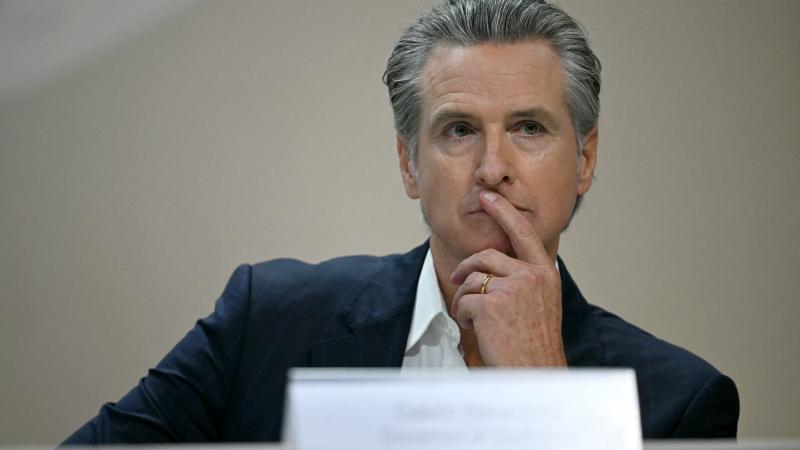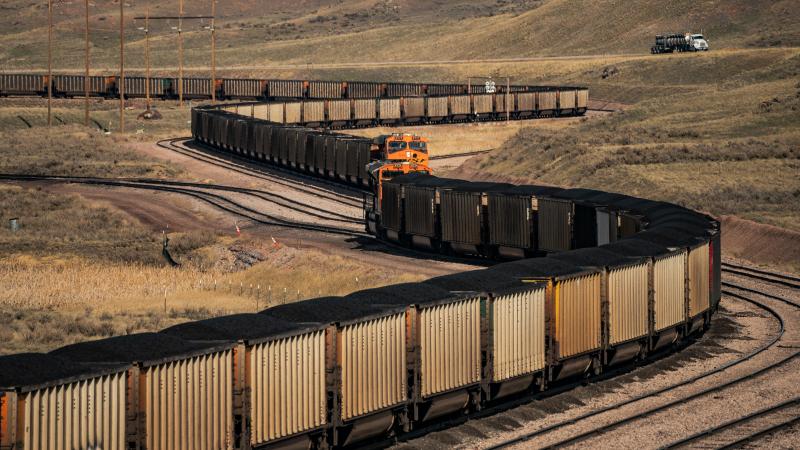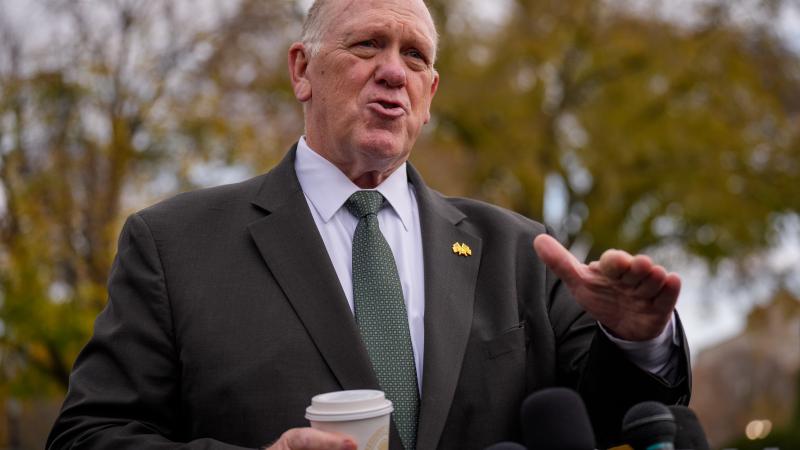While Biden admin pushes construction of more battery facilities, battery fires pose deadly risks
The fire captain was blown over 70 feet against a chain-link fence surrounding the building. The entire hazardous materials team lost consciousness from the blast. Many firefighters say lithium-ion fires are nearly impossible to supress.
Last month, a fire at a battery facility in a San Diego suburb led to evacuations and a shelter-in-place order at a nearby prison. Now, fire officials with Cal Fire San Diego say the fire could take weeks to put out, a local Fox affiliate reported.
Since wind and solar energy only produce electricity under the right weather conditions, green energy proponents are hoping that battery facilities will solve the intermittency problem. Though storing energy from batteries is extremely expensive, the Biden administration is providing funds to build more storage systems. The Energy Information Administration (EIA) projects that the amount of battery storage capacity planned or operating in the United States will double to 30 gigawatts by the end of 2024.
In most cases, battery facilities store only a few hours of electricity. The U.S. Energy Information says that capacity would power about 133,000 homes for a month, or about 0.01% of the total households in the U.S.
With 7.3 gigawatts of energy storage capacity, according to the EIA, California leads the country in these facilities. It has more than twice the capacity of Texas, the state with the next highest amount.
Thermal runaway
However, the fire in Otay Mesa, as well as other fires at battery facilities across the country, are giving Californians pause. Residents in an unincorporated area north of San Diego are organizing to stop a planned 320-megawatt facility. A planned 600-megawatt in Morro Bay in Central California is also facing opposition from locals. In both cases, safety concerns are the big issue.
Other communities across the country are also resisting the placement of these developments near their homes, such as one in Somers, New York, and one in Houston, Texas.
The fires at these grid-scale storage systems present new challenges for firefighters. Lithium-ion batteries catch fire when they experience something called "thermal runaway," which is when the lithium-ion cell enters an uncontrollable, self-heating state. The fires produce hydrogen, which burns with very little oxygen, making these fires very difficult to smother. Battery fires also produce deadly toxic gasses, such as hydrogen fluoride, hydrogen cyanide, hydrogen chloride and sulfur dioxide.
On April 19, 2019, a fire captain, a fire engineer and two career firefighters suffered serious injuries dealing with a thermal runaway incident at a 2.16-megawatt battery facility in Surprise, Arizona. According to a Underwriters Laboratories report on the incident, When firefighters opened a door to the building, a 75-foot jet of flame extended outward from the doorway. The fire captain was blown over 70 feet against a chain-link fence surrounding the building. The entire hazardous materials team lost consciousness from the blast.
Firefighters are gradually developing strategies to deal with the fires, and regulations are being implemented to improve the safety of these facilities.
Explosion hazard
Sean DeCrane, director of health and safety operational services for the International Association of Fire Fighters, attended a conference on energy storage system (ESS) fires in Arizona this month. He told Just the News that prior to 2018, there was nothing in the fire codes governing these facilities. Since then, the National Fire Protection Association has developed requirements for installation, and Underwriters Laboratories has developed test methodologies. These guide what kinds of ventilation systems and fire-suppression systems are needed at a particular facility.
The biggest risk to firefighters trying to attack a burning battery system, he said, is the hydrogen gas that the fires give off. “That hydrogen does present an explosion hazard to our members,” DeCrane said. He said the regulations have gone a long way to increase fire safety of the systems, but they still pose a challenge for firefighters.
“Part of the requirements are that a building manager engage a local fire service to develop an emergency response plan. And I think that's where we see a big gap. I don't think we see enough of these installers or business owners engaging the local fire service to develop the appropriate emergency response. So in many cases, the fire department's showing up and going, ‘what do we got here?’” DeCrane said.
He said it takes more than just an agreement with facility owners that a department will provide aid. It takes a deeper engagement so that a department can research and plan.
Research and planning
According to the American Clean Power Association, a renewable energy industry group, the number of fire incidents at ESS facilities is increasing, but it is decreasing as a percentage of the amount of battery storage deployed. So, statistically the facilities are becoming safer. The group has also developed guides to help first responders with pre-incident planning and incident response.
DeCrane said researching the fires to determine best practices and identify solutions is another barrier for firefighter safety. “We don't have all the answers yet, because a lot of this research, the batteries themselves are very expensive. So to conduct the scaled research that is required is expensive,” DeCrane explained.
He said, not only do you have to have batteries to test with, you have to run multiple tests, each one with a single variable so you can measure the impact of that one variable.
As an organization, the IAFF wants to see more engagement from the energy storage industry, so that the problem can be properly researched and solutions developed, DeCrane continued,
“We are not here to try to block technology from coming to the marketplace — far from it. We understand the advantages of various technologies. But the simple matter of the fact is that everything's going to fail, and when that failure occurs, those who designed it are not there to deal with that failure. It's our members. Our members have to respond to it. Our members have to effectively bring that situation to a close, hopefully protecting the firefighters and the civilians that they're there to protect,” DeCrane said.
The Facts Inside Our Reporter's Notebook
Links
- fire at a battery facility in a San Diego suburb
- say the fire could take weeks
- storing energy from batteries is extremely expensive
- providing funds to build more storage systems
- double to 30 gigawatts by the end of 2024
- about 133,000 homes for a month
- total households in the U.S
- other fires at battery facilities
- organizing to stop a planned 320-megawatt facility
- facing opposition from locals
- one in Somers, New York
- one in Houston, Texas
- thermal runaway
- Underwriters Laboratories report
- International Association of Fire Fighters
- decreasing as a percentage of the amount of battery storage deployed
- first responders with pre-incident planning
















